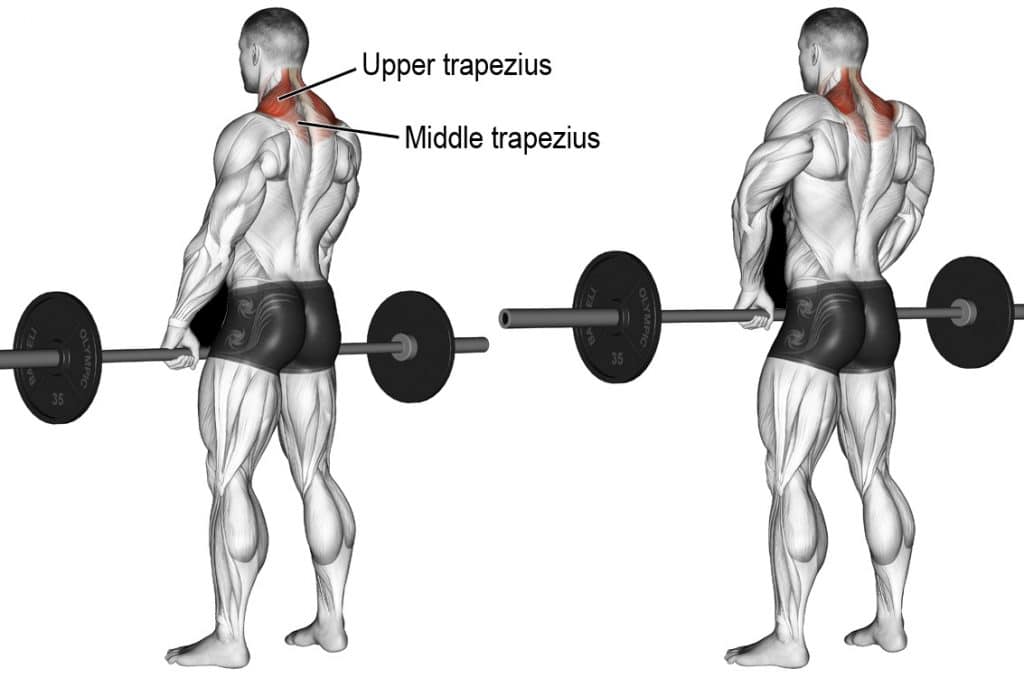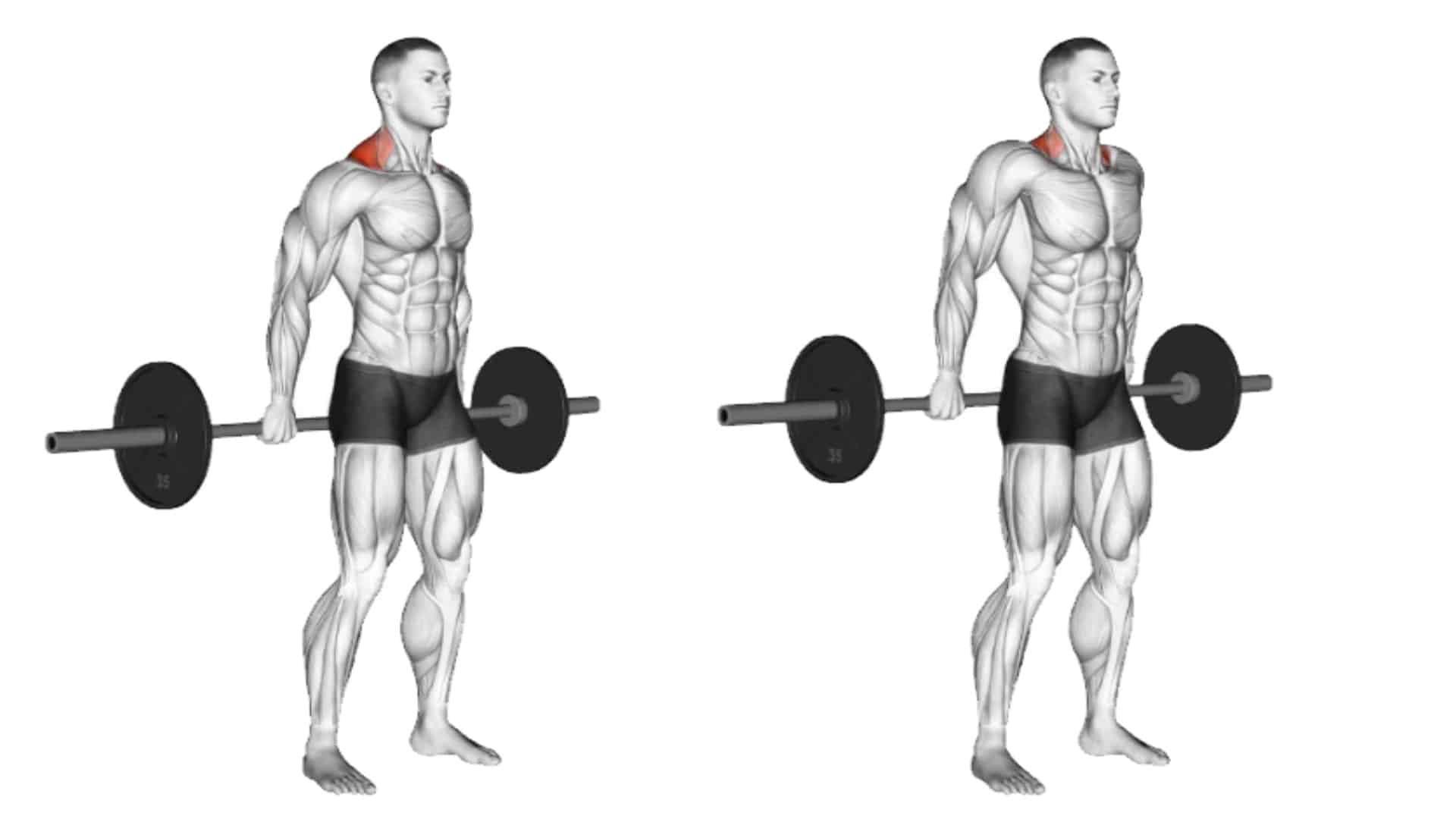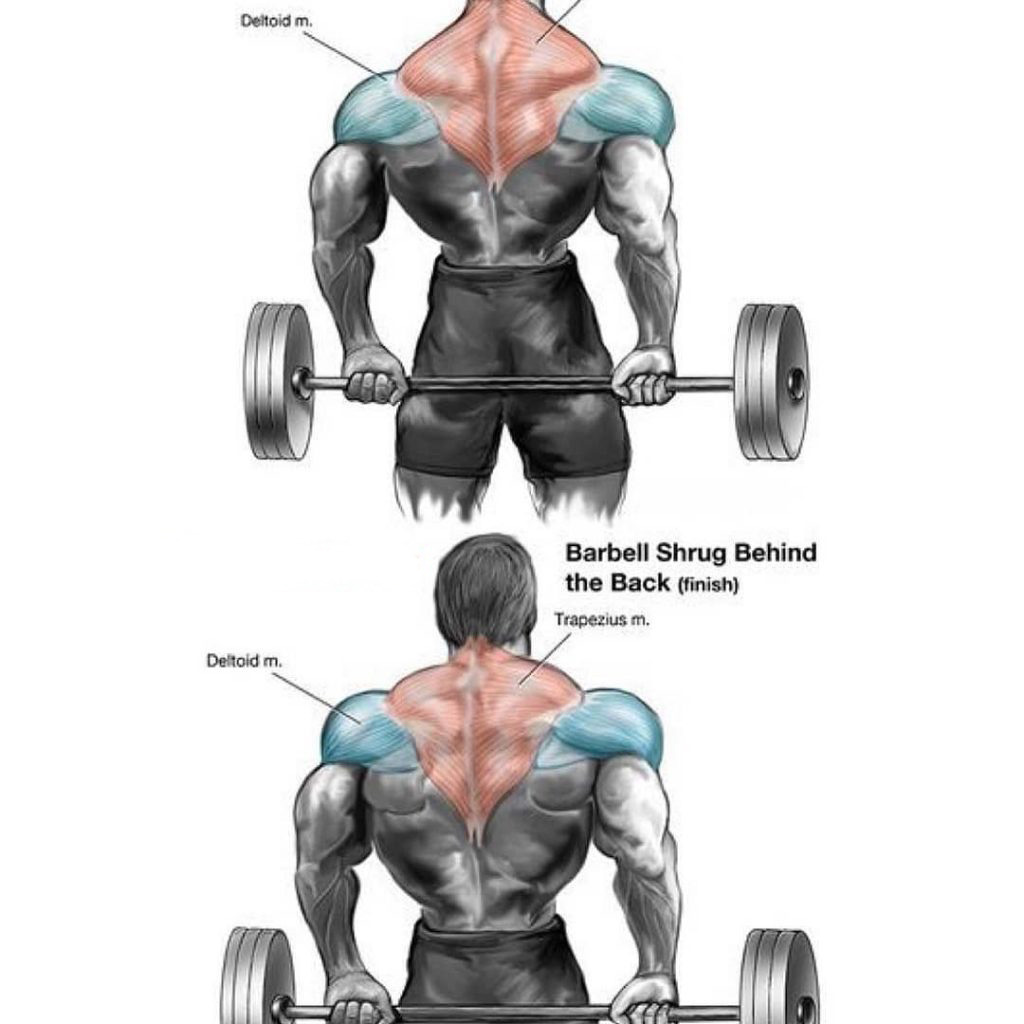
Barbell shrugs are a popular exercise for building a strong and defined upper back. This exercise primarily targets the trapezius muscles, but it also works several other muscles in the upper body. In this article, we'll explore the various muscles worked during barbell shrugs and how to perform this exercise correctly.
Trapezius Muscles

The trapezius muscles are the primary muscles worked during barbell shrugs. They are located in the upper back, between the shoulders and neck. The trapezius muscles are responsible for shoulder elevation, retraction, and depression. Barbell shrugs place a large amount of stress on the upper traps, making them a great exercise for building strength and size in these muscles.
Rhomboid Muscles

The rhomboid muscles are located in the upper back, underneath the trapezius muscles. They are responsible for shoulder blade retraction, which is important for maintaining good posture. Barbell shrugs also work the rhomboid muscles, but to a lesser extent than the trapezius muscles.
Levator Scapulae Muscles

The levator scapulae muscles are located at the back and side of the neck. They are responsible for elevating the scapulae (shoulder blades) and tilting the head to the side. Barbell shrugs work the levator scapulae muscles to a lesser extent than the trapezius muscles.
Erector Spinae Muscles

The erector spinae muscles are located along the spine and are responsible for spinal extension and rotation. Barbell shrugs also work the erector spinae muscles to a lesser extent, making them a great exercise for building overall back strength.
Deltoid Muscles
The deltoid muscles, also known as the shoulder muscles, are responsible for shoulder abduction, flexion, and extension. Barbell shrugs work the anterior (front) and lateral (side) deltoids to a lesser extent than the trapezius muscles.
Biceps and Forearms
Barbell shrugs also work the biceps and forearms to a lesser extent. This is because the grip required to hold the barbell during the exercise engages these muscles. However, barbell shrugs should not be relied upon as a primary exercise for building bicep or forearm strength.
How to Perform Barbell Shrugs

To perform barbell shrugs, follow these steps:
- Stand with your feet shoulder-width apart and grasp a barbell with an overhand grip.
- Allow the barbell to hang at arm's length in front of your thighs.
- Elevate your shoulders as high as possible, keeping your arms straight.
- Hold the contraction for a second, then lower your shoulders back down to starting position.
- Repeat for the desired number of reps.
It's important to use proper form when performing barbell shrugs to avoid injury and maximize results. Keep your shoulders down and back throughout the exercise, and avoid using momentum to lift the weight. Instead, focus on contracting the trapezius muscles to lift the weight.
Conclusion
Barbell shrugs are a great exercise for building a strong and defined upper back. They primarily work the trapezius muscles, but also engage several other muscles in the upper body. By including barbell shrugs in your workout routine, you can improve your overall back strength and posture.